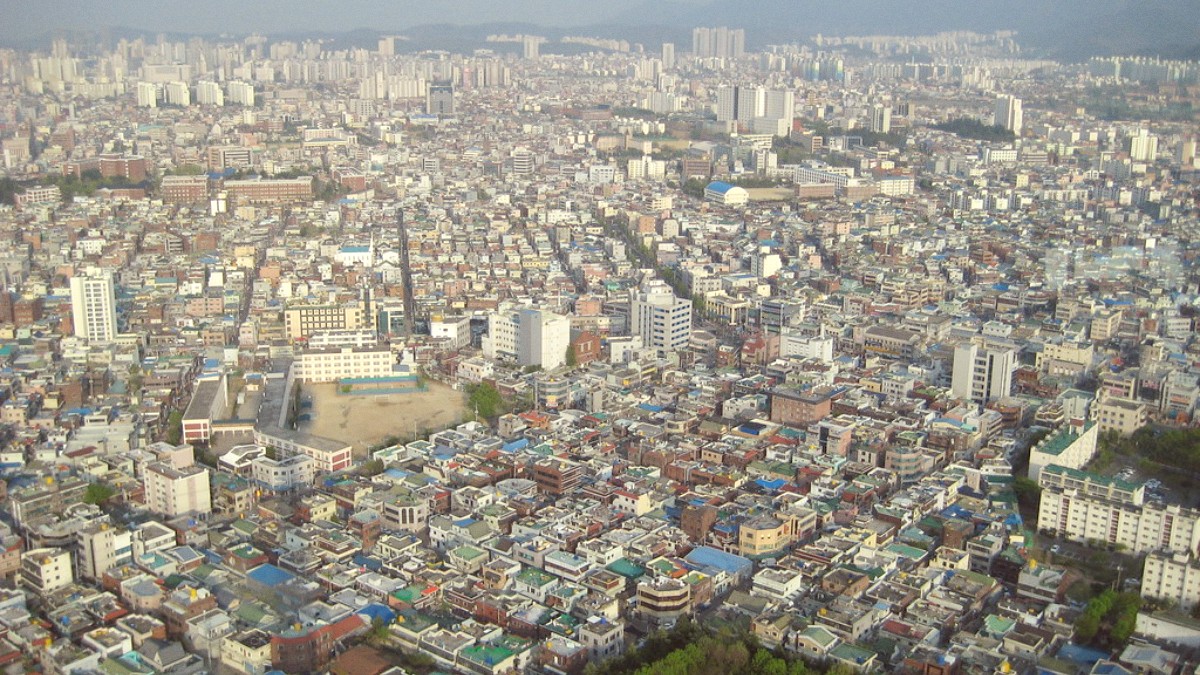
Gyeongsangbuk Do, South Korea
Spring (March-May) brings mild temperatures, typically ranging from 10-20°C (50-68°F). It remains relatively dry, with pleasant days for sightseeing. Cherry blossoms appear in late March to early April, painting the city in soft pink and white. Autumn (September-November) is a favored season. Days are crisp and clear, with comfortable temperatures averaging 15-25°C (59-77°F).
Daegu's summers (June-August) are notably hot and humid, often exceeding 35°C (95°F). Average temperatures hover around 25-30°C (77-86°F). This period includes the monsoon season, known as Jangma, from July to early August, bringing significant rainfall. Locals refer to Daegu as "Africa of Korea" because of this intense summer heat. Winters (December-February) are cold and dry, with temperatures typically ranging from -5 to 5°C (23-41°F). Temperatures can drop below freezing, and occasional snowfall occurs.
Monsoon (Jangma) occurs mainly in July and early August. Travelers facing this period should pack an Umbrella or a Lightweight rain jacket.
Fine Dust (Mise-meonji), an air pollution phenomenon, occurs periodically, especially in spring and winter. On high-alert days, wearing a KF94 mask comes recommended. Check local air quality forecasts daily.
Ideal weather, peak natural beauty.
Weather for activities is ideal. Natural beauty is at its peak. Many festivals take place.
Expect higher prices for flights and lodging. Popular attractions will have larger crowds. Advance booking is highly advisable.
Late May/Early June, Mid-September
Good weather before extreme heat or cold. Fewer crowds than high season. Possible better deals on flights and lodging.
Late spring can feel humid. Mid-September might still have lingering summer warmth.
Extreme temperatures, fewer tourists.
Lowest prices for flights and lodging. Fewer tourists for a more local experience. Winter offers nearby skiing. Summer hosts festivals like Chimac.
Extreme temperatures dominate. Summer heat and monsoon rains limit outdoor activities. Winter is very cold, necessitating warm clothing.
Hiking (Palgongsan, Biseulsan): Spring and autumn provide the best conditions. These seasons feature pleasant temperatures and clear skies ideal for mountain exploration.
City Sightseeing is comfortable in spring and autumn. Cherry Blossom Viewing is best in late March to early April. Fall Foliage viewing is superb from mid-October to early November. Spa & Hot Springs visits are a welcome escape in winter.
Spring & Autumn.
Spring & Autumn.
Late March - Early April.
Mid-October - Early November.
Typically in July.
South Korea employs different entry procedures based on nationality and trip purpose.
Many nationalities, including citizens from the United States, Canada, Australia, New Zealand, and most EU countries, enter South Korea without a visa for short stays (30-90 days for tourism/transit).
Citizens of countries not on the visa-free list submit a visa application at a South Korean embassy or consulate in their home country. Start this process well in advance.
Plan your budget for Daegu to match your travel style. Prices vary, but understanding typical costs helps manage expenses effectively.
Daegu is a very safe city, and understanding health and safety guidelines prepares travelers for any situation.
South Korea has no specific vaccination requirements for entry from most countries. Consult a healthcare provider before your trip for tailored advice on Hepatitis A and B, and Typhoid vaccines if you plan to eat from various local sources.
Daegu provides access to modern medical facilities, including Keimyung University Dongsan Medical Center and Chilgok Kyungpook National University Hospital, some with English-speaking staff.
Be aware of potential heatstroke/dehydration in summer and cold-related illness in winter. Air pollution (fine dust) occurs periodically.
Wash hands frequently and use reputable eateries for food hygiene.
Wear a KF94 mask on high fine dust days.
Tap water in South Korea is technically safe. Many locals opt for boiled, bottled, or filtered water. Bottled water is widely available.
A Reusable water bottle with a filter is a sustainable option.
Food hygiene standards are generally high; choose busy street food stalls.
Daegu's crime rate is very low. Petty crime is rare but possible in crowded areas. Typhoon season is late summer to early autumn (July-September).
Neighborhoods like Dongseongno are well-lit and safe.
Strong earthquakes are rare; localized urban flooding can occur during monsoon.
| Category | Budget Traveler | Mid-Range Traveler |
|---|---|---|
| Accommodation | $15 - $25 | $40 - $75 |
| Food | $15 - $25 | $30 - $50 |
| Total Daily | $37 - $60 | $75 - $150 |